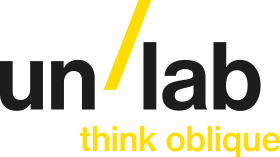CIRCLE – Circular Economy in Graphic Design
The project
CIRCLE – Circular Economy in Graphic Design
Project number: 2021-2-RO01-KA210-VET-000049359
KA210-VET – Small-scale partnerships in vocational education and training
2022 -2023 (14 months)
Partner
Sindicatul independent din invatamantul preuniversitar sector 4 (Romania) – www.siips4.ro
UN-LAB (Italy) – https://www.un-lab.it/
Summary
The project is being implemented under the Erasmus+ program, by 2 organizations from Romania and Italy. Its main objective is to address environmental and climate-change challenges through the development of green sectorial skills and through the enhancement of the concept of Circular Economy applied to the teaching process in the sector of graphic design in VET and Technical schools.
Specific Objectives
- to increase capacity and confidence of graphic design teachers/trainers/educators in teaching sustainability and circular economy and its importance in the field of Graphic design
- to contribute to the creation of more sustainability-oriented graphic design curricula that are relevant to the current and future needs of the economy and society
- to contribute to sustained professional development that combines the experience and expertise of the partners in the field of graphic design
- to raise awareness among all actors involved in the project on environmental and climate-change challenges in the field of graphic design at all levels
- to increase capacity of partners to cooperate in the field of sustainability at EU and international level.
Target Groups
DIRECT:
- Graphic design teachers, trainers and educators from the VET sector
- graphic design experts
INDIRECT:
- graphic design students
- graphic design private companies and public offices
RELEVANT STAKEHOLDERS
- policy makers at local, regional, national and EU level
Results
- “Sustainable Graphic Design” Manual which main objective is to become a transversal tool to be included in the training curricula of graphic design teachers, trainers and educators. It will include theoretical and practical examples and will support professionals to train and form their students in order to become aware and environmentally friendly graphic designers
- Online training aimed to provide graphic design teachers, trainers, educators and experts with all required skills and competences linked to the issues of the EU Green Deal and more specifically to circular economy and its impact and importance in the field of graphic design
Activate your language subtitles by clicking on the settings icon in the lower side of the youtube video
Activate your language subtitles by clicking on the settings icon in the lower side of the youtube video
Learning outcomes:
- Understand the environmental impact of electronic consumption and the role of design in reducing this impact.
- Recognize the importance of digital sustainability and the principles of sustainable design practices in digital communication.
- Identify the key EU regulations related to electronic consumption, energy efficiency, and waste management.
- Assess the environmental impact of design decisions on energy consumption and greenhouse gas emissions.
- Apply energy-efficient design practices to optimize images, videos, and other digital content for low-bandwidth use and reduced file sizes.
- Implement sustainable digital design strategies, such as using sustainable hosting services, adopting green power sources, and minimizing the use of disposable devices.
- Develop creative solutions for reducing the carbon footprint of digital design through assigned projects and real-world scenarios.
- Advocate for sustainable digital design practices and share knowledge with peers and colleagues to promote a culture of environmental responsibility in the design community.
Activate your language subtitles by clicking on the settings icon in the lower side of the youtube video
Learning outcomes:
- Understand the importance of using energy-efficient equipment in graphic design to reduce energy consumption and carbon emissions, and contribute to the European Green Deal’s goal of reducing greenhouse gas emissions.
- Be aware of the EU regulations and policies that promote energy efficiency and set minimum energy performance standards, such as the Energy Efficiency Directive, the Ecodesign Directive, and the Energy Labelling Directive.
- Identify the different types of energy-efficient equipment commonly used in graphic design, including Energy Star certified computers, printers, monitors, and servers.
- Learn about the benefits of using energy-efficient equipment, such as cost savings, improved work environment, and increased productivity.
- Apply various teaching methods to introduce the use of energy-efficient equipment in the curriculum, including hands-on workshops, case studies, group projects, guest speakers, and integration into existing lessons.
- Develop an understanding of how incorporating energy-efficient equipment can benefit the environment, the work of graphic designers, and their careers.
Activate your language subtitles by clicking on the settings icon in the lower side of the youtube video
Learning outcomes:
- Understanding the history and evolution of digital tools in graphic design, with a focus on CAD software in Europe.
- Gaining knowledge of popular CAD and graphic design software and their main characteristics, including Adobe Creative Suite, CorelDRAW, Sketch, Affinity Designer, and Canva.
- Recognizing the importance of digital tools in reducing the environmental impact of design by minimizing waste and the need for physical materials.
- Identifying the factors that influence the choice of graphic design software in educational institutions, such as budget, student skill level, and project requirements.
- Implementing effective teaching strategies to introduce digital tools in the graphic design curriculum, including hands-on lessons, project-based learning, guest speakers, online resources, group discussions, and field trips.
- Encouraging students to explore and master digital tools in their design projects, fostering creativity, collaboration, and innovation.
- Developing an appreciation for the role of digital tools in graphic design and their contribution to sustainable design practices.
Activate your language subtitles by clicking on the settings icon in the lower side of the youtube video
Learning outcomes:
- Understand the history and development of eco-friendly materials in Europe, and their importance in various industries, including graphic design.
- Recognize the benefits of using recycled paper in graphic design, including resource conservation, carbon footprint reduction, water conservation, and tree conservation.
- Identify the different types of eco-friendly paper materials, such as post-consumer waste, pre-consumer waste, agricultural waste, bamboo, and hemp.
- Understand the importance of certifications like FSC and PEFC in promoting sustainable forest management and responsible paper sourcing.
- Learn about the OK Compost certification, its role in promoting the use of biodegradable plastics, and its importance in European regulations.
- Understand the applications of biodegradable plastics in graphic design, such as in packaging materials, marketing materials, and promotional items.
- Recognize the limitations and challenges of using biodegradable plastics, including the need for proper regulations, infrastructure, and disposal methods to ensure their environmental benefits are realized.
- Develop an awareness of the importance of considering the entire lifecycle of eco-friendly materials, from production to disposal, when choosing materials for graphic design projects.
Activate your language subtitles by clicking on the settings icon in the lower side of the youtube video
Learning outcomes:
- Understand the importance of reusing materials in graphic design, including its impact on the environment, cost savings, and promoting sustainability.
- Recognize examples of reusing materials in graphic design, such as using scrap paper for sketching or creating prototypes, and utilizing paper scraps for collages or crafts.
- Become familiar with recycling programs and sustainable initiatives in Europe, including national and regional programs, eco-contributions, eco-bonuses, and eco-design regulations.
- Develop awareness of the recycling rates and waste management practices in different European countries, such as Romania and Italy.
- Gain knowledge of how graphic design teachers can incorporate reusing materials into the curriculum through lectures, class projects, guest speakers, visits to recycling facilities, online resources, creative challenges, and group discussions.
- Encourage critical thinking and problem-solving skills by exploring creative ways to repurpose and reuse materials in graphic design projects.
- Promote environmental awareness and a circular economy mindset among graphic design students, fostering a commitment to sustainability and a better future.
Activate your language subtitles by clicking on the settings icon in the lower side of the youtube video
Learning outcomes:
- Understanding the environmental impact of packaging waste and the importance of minimizing packaging in graphic design.
- Identifying different types of sustainable packaging materials and their benefits, such as biodegradable, reusable, and minimalistic packaging.
- Recognizing the advantages of digital delivery methods in reducing packaging waste and environmental impact.
- Developing the ability to design and create packaging that minimizes waste while protecting the final product.
- Gaining knowledge of sustainable packaging practices and innovations in the industry through research and guest speakers.
- Applying critical thinking and problem-solving skills to create eco-friendly packaging solutions in hands-on projects.
- Engaging in class discussions and group activities to share experiences, ideas, and knowledge about minimizing packaging waste.
- Utilizing online resources to further explore and learn about sustainable packaging practices and innovations.
Activate your language subtitles by clicking on the settings icon in the lower side of the youtube video
Learning outcomes:
- Understand the importance of sustainable printing techniques in the graphic design industry and their impact on the environment.
- Gain knowledge about various sustainable printing methods, such as digital printing, LED printing, and printing without water.
- Learn the benefits and characteristics of each sustainable printing technique.
- Develop the ability to incorporate sustainable printing techniques into the design process, from concept to final execution.
- Analyze and compare the environmental impact of different printing techniques and choose the most sustainable option for a given project.
- Apply hands-on skills in using eco-friendly printing techniques and materials.
- Understand the role of graphic designers in promoting environmentally responsible practices in the printing industry.
- Engage in critical thinking and problem-solving to find innovative ways to reduce waste and utilize eco-friendly materials in printing.
- Develop awareness of real-world examples of companies using sustainable printing techniques and their success stories.
- Utilize online resources, industry experts, and field trips to expand knowledge about sustainable printing techniques and stay up-to-date with industry trends.
Activate your language subtitles by clicking on the settings icon in the lower side of the youtube video
Learning outcomes:
- Understand the environmental benefits of virtual meetings and presentations, including reduced travel and transportation, decreased paper usage, and lower energy consumption.
- Recognize the efficiency and effectiveness advantages of virtual meetings and presentations in the graphic design process, such as real-time collaboration, feedback, and easy access to recorded information.
- Familiarize with popular virtual meeting and presentation tools used in Europe, including Zoom, Skype, Google Meet, Adobe Connect, Microsoft Teams, and Slack.
- Analyze real-life examples of companies and organizations in Europe that have successfully implemented virtual meeting and presentation tools as part of their sustainability efforts.
- Develop practical skills in creating and delivering virtual presentations and working with virtual collaboration tools.
- Engage in discussions, collaborative activities, and hands-on projects related to virtual meetings and presentations in graphic design.
- Gain exposure to expert knowledge through workshops and guest speakers, and utilize online resources to expand their understanding of virtual meeting and presentation tools and techniques.
Activate your language subtitles by clicking on the settings icon in the lower side of the youtube video
Learning outcomes:
- Understand the importance of reducing the number of revisions in the graphic design process and its benefits for sustainability, efficiency, and client satisfaction.
- Develop effective communication skills to establish clear expectations with clients and team members.
- Utilize mood boards and sketches to effectively present initial concepts and design directions, minimizing the need for revisions.
- Implement feedback and revision tracking methods to ensure timely and efficient handling of client suggestions.
- Gain familiarity with design templates and their role in reducing revisions and streamlining the design process.
- Learn about collaboration tools and their impact on improving the design process, reducing revisions, and promoting real-time collaboration.
- Understand the significance of design guidelines in providing clear directions and consistency in the design process.
- Recognize the importance of sustainability in the graphic design industry and its connection to optimizing the design process.
- Analyze real-world examples of companies and designers who have successfully optimized their design processes.
- Apply the concepts of optimizing the design process and sustainable design principles in hands-on projects.
- Develop the ability to self-reflect and seek feedback to continuously improve design processes and habits.
Activate your language subtitles by clicking on the settings icon in the lower side of the youtube video
Learning outcomes:
- Understand the different types of inks and solvents used in graphic design, including solvent-based, water-based, and vegetable inks.
- Recognize the environmental impact of inks and solvents, particularly in terms of VOC emissions and waste production.
- Identify the advantages and disadvantages of each type of ink and solvent.
- Understand the application of different types of inks and solvents in various printing processes.
- Become familiar with EU regulations and standards related to inks and solvents.
- Develop skills in researching and experimenting with sustainable inks and solvents.
- Understand the importance of sustainability in the graphic design industry.
Activate your language subtitles by clicking on the settings icon in the lower side of the youtube video
Learning outcomes:
- Understand the concept of print on demand and its benefits, including cost and time-saving, as well as environmental sustainability.
- Recognize the advantages and disadvantages of print on demand services.
- Learn about various printing technologies involved in print on demand, such as digital printing, screen printing, and heat transfer printing.
- Develop skills in creating print on demand designs and understand the design requirements and restrictions.
- Gain hands-on experience in using print on demand platforms and services.
- Understand the importance of sustainable practices and materials in print on demand.
- Explore real-life examples and case studies of print on demand applications.
Activate your language subtitles by clicking on the settings icon in the lower side of the youtube video
Learning outcomes:
- Understand the importance of sustainability in graphic design and the environmental impact of printing.
- Learn about certifications and environmental policies that indicate a printing company’s commitment to sustainability.
- Recognize the benefits of eco-friendly printing methods, such as digital printing, vegetable-based inks, and water-based solvents.
- Develop research and evaluation skills to assess the sustainability practices of different printing companies.
- Gain knowledge of real-life examples of sustainable printing companies and their projects.
- Incorporate sustainability considerations into the design process, from selecting a printing company to choosing materials and methods.
Activate your language subtitles by clicking on the settings icon in the lower side of the youtube video
Learning outcomes:
- Understand the importance of communication and spreading knowledge about sustainable graphic design.
- Learn about initiatives and campaigns promoting sustainable graphic design in the European Union.
- Develop the ability to incorporate sustainable design principles into their work.
- Gain experience in using case studies, guest lectures, group projects, online resources, and discussions to teach sustainable graphic design.
- Develop critical thinking and collaboration skills related to sustainable design practices.
Activate your language subtitles by clicking on the settings icon in the lower side of the youtube video
